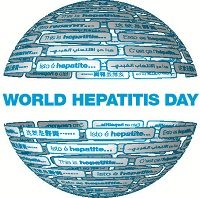Article
World Hepatitis Day to Increase Awareness of Hepatitis Virus
Author(s):
July 28 is World Hepatitis Day. The organizers of the awareness campaign are using a variety of channels, including social media, to educate and inform patients and clinicians about hepatitis prevention and treatment.

For some diseases, clinicians know exactly how they’re transmitted from one person (or other organism) to another, but don’t know the exact pathophysiology of disease. Or they don’t have strong evidence of safe and effective treatments. For the hepatitis C virus (HCV), the precise mechanisms regulating the transmission of the virus to hepatic cells are still unclear, but the pathophysiology and treatment are well-understood. In fact, treatment—measured by sustained viral response—is pretty effective in the majority of HCV patients (though the infection can recur even after successful treatment). And prevention techniques, though not easy to implement in all cases in all areas of the world, are well-understood and very effective.
Why, then, do 1.4 million people die each year from viral hepatitis? That is, on average, just under 4,000 people per day. Why do 400 million people worldwide live with hepatitis B or C? Those questions are among the many that the organizers of World Hepatitis Day are helping to solve, with one of only 4 official disease-specific world health days—today, July 28.
The organizers of the event are using social media to create a storm of awareness: they’re asking for 4,000 people to stand up and be heard in the quest to raise awareness of viral hepatitis. The organizers note, “You can provide a voice for the 4,000 lives that will be lost on World Hepatitis Day this year. Together your voices become a powerful symbol for the need for action to prevent future deaths.”
To participate, simply tweet using the hashtag #4000voices. You can also upload an image to contribute your Twitter avatar or photo to a collage to add your voice to those calling for awareness, prevention, and treatment.
The awareness campaign also includes posters on blood and injection safety, hard reduction, fast facts about hepatitis, and the need for vaccination. For example, many people might not be aware that the risk of becoming chronically infected is as high as 90% for infants infected during their first year.
HCV is spread primarily by blood-to-blood contact associated with intravenous drug use, poorly sterilized medical equipment, and transfusions. Unsafe injections account for 42% of new HCV infections each year—a total that typically adds up to an estimated 2 million new cases each year. HCV can be asymptomatic in some cases, but choric infection can lead to dangerous scarring of the liver and ultimately cirrhosis. Better awareness of prevention techniques—not just for patients and potential sufferers, but also for healthcare professionals—is a crucial first step.





